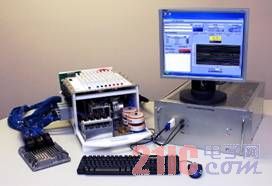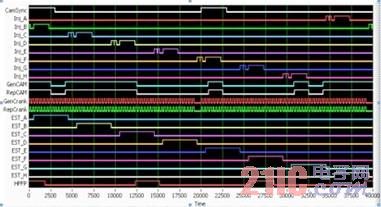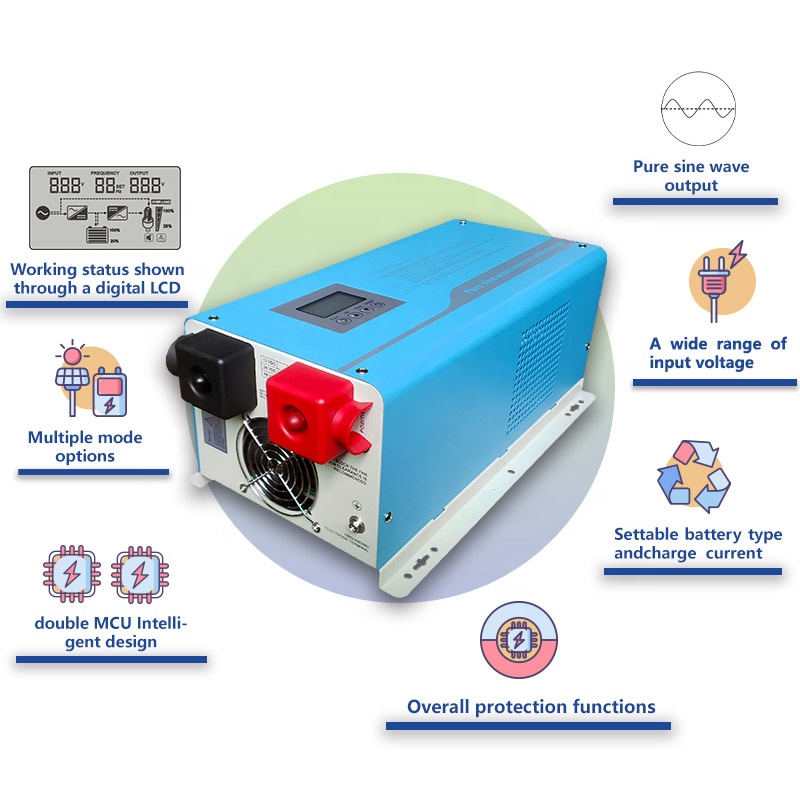“We used LabVIEW to independently develop data acquisition systems and log file tools, and our systems depend entirely on the speed and accuracy of NI products.†- Thomas J. Mangliers, DGE Inc.
This article refers to the address: http://
 challenge:
The development of a multi-signal hardware-in-the-loop (HIL) simulation system for the engine control unit (ECU) requires the system to produce precisely timed camshaft and crankshaft waveforms and monitor ignition, injection and other timing signals while the system needs to be extremely high. The sampling rate and very small error tolerance.
 solution:
Using the NI PXI platform and the LabVIEW graphical development environment, a high-speed data acquisition system (DAS) was developed to generate and monitor complex signals to accurately simulate the running engine / vehicle environment for ECU testing.
 The original purpose of the DAS was to simulate the vehicle environment in order to perform ECU testing under laboratory conditions where it was inconvenient or impossible to use an actual vehicle or actual engine . This requires the DAS to generate and monitor complex timing signals such as camshaft and crankshaft signals with nanosecond resolution.
 A typical ECU module has a complex I/O layout. The ECU signal is defined in an Excel worksheet to identify any changes to the existing signal. With this worksheet, the user can outline the signal, error margin and unit, and use DAS multi-order math functions for signal conversion or scaling. Users can easily add or remove typical signals without changing any system software.
 Due to the small margin of error, the ECU signal requires the DAS system to recognize minor differences between modules and minor changes in test setup. To this end, the DAS reference setting records all ECU outputs for a specified time to dynamically adjust the user's margin of error to match the current output. With benchmark information, users can immediately detect small deviations during the test.
 Since the system monitors at such a high rate, recording each set of readings produces a large amount of data. To manage the data, the DAS system generates a report showing the readings recorded in the baseline and any readings that exceed the user-defined error tolerance. While monitoring ECU anomalies, DAS can also quickly generate a detailed module performance report for each individual test .
 During testing, DAS can be used as a host or slave for EMC testing, desktop HIL simulation systems, functional testers, or for simple integration of Ethernet control with existing test control software.
 Features of high speed DAS include the following:
Ÿ           192 digital I/O channels
Ÿ           16 analog I/O channels
Ÿ           Arbitrary waveform generator
Ÿ           Two CAN ports
Ÿ           Measurement standards (signal types, parameters, margin of error, and more) that are easily defined in an Excel spreadsheet
Ÿ           Ethernet remote command interface for test automation
Ÿ           Automated module baselines for all signals to more accurately detect system anomalies
Ÿ           Data log file creation
Ÿ           Using LabVIEW development tool generates a log file data reports, test summary and charts indicated with Excel
Ÿ           Timing signal display
Â
High-speed data acquisition using the NI PXI platform
 National Instruments products are at the heart of our system. NI provides all I/O for our DAS systems , including complex signal generation, high-speed acquisition, and vehicle bus simulation and monitoring. We used LabVIEW to develop our own DAS and log file tools, and our systems rely entirely on the speed and precision of NI products. We are unable to use a standard acquisition card for our application because the ECU signal requires precise timing. Instead, we chose to use the NI R Series Intelligent Field Programmable Gate Array ( FPGA ) DAQ module to provide waveforms with complex timing and simulated sensor outputs. The NI PXI-7831R and PXI-7833R R Series intelligent DAQ modules also allow us to acquire and output real-time ECU output signals at higher sample rates .
 DAS data processing is another issue we face. Our solution is to develop a log file tool using the parallel processing mechanism inherent in LabVIEW and use a multi-core application to take full advantage of the host's full computing power to process our data.
 Advantages of using the National Instruments platform
 The DAS system can be tested using off-the-shelf tools in a normal laboratory environment, rather than in a dedicated vehicle lab, significantly reducing the cost to our customers. Because the DAS can monitor and control all ECU signals, we completed the test once, and the old acquisition system of the previous customer required multiple tests because of the limited number of channels available . Users can now complete the testing process in as little as three weeks, while the old acquisition system takes three months.
Â

DGE high-speed DAS is connected to the DGE load box, and the user's ECU timing signal display example

Since the system monitors at such a high rate, recording each read produces a large amount of data.
1KW-8KW Power Inverter
Use double MCU design,the product provides different charge voltages and charge currents to realize charge management for batteries of different types.Its mains supply preferred mode,energy--saving mode and battery preferred mode are all settable,thus making it easy to meet users' different application needs.It has an LCD to show operation status.It is widely applied to families,schools,streets,frontier defense,pasturing areas,industrial equipment,military vehicle--borne equipment,ambulances,police cars,ships,ect.


Nkm Hybrid Inverter With Mppt Charge,Inverter Power Inverter,Hybrid Inverter Charger,Hybrid Grid Tie Inverter
suzhou whaylan new energy technology co., ltd , https://www.nbwhaylan.com
![<?echo $_SERVER['SERVER_NAME'];?>](/template/twentyseventeen/skin/images/header.jpg)